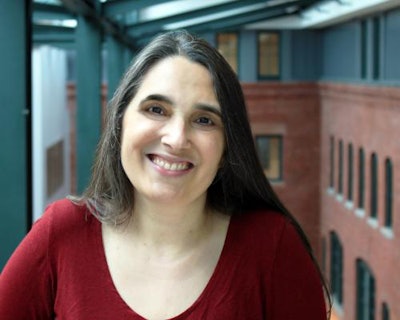New research on faculty member workloads at colleges and universities across the country, indicate glaring inequities based on gender and race.
The study, “Gendered and Racialized Perceptions of Faculty Workloads,” included responses from 947 faculty across 53 departments at 22 institutions. The research team consisted of scholars Dr. Joya Misra, Dr. Alexandra Kuvaeva, Dr. KerryAnn O’Meara, Dawn Kiyoe Culpepper and Dr. Audrey Jaeger.
 Dr. Joya Misra
Dr. Joya Misra“We have heard that issues of workload inequities are one of the main barriers for women and for faculty of color moving forward and promotion and advancement,” said Culpepper, a doctoral candidate in higher education and faculty specialist for the ADVANCE Program at the University of Maryland. “The genesis of this project was really figuring out ways, strategies and interventions that departments could use and put in place to try and solve some of these problems with the goal of promoting equity in mind.”
While male faculty tend to engage with research, women faculty focus much more on teaching, mentoring and service opportunities. However, with research favored at institutions, White men have a higher chance of earning a promotion, the report noted.
Within academic departments, white women were more likely to view the distribution of workload as inequitable compared to white men, according to the research.
Misra, a professor of sociology and public policy at the University of Massachusetts Amherst, emphasized that the workload burden is more pronounced for faculty of color due to “identity taxes” which translates into more participation in mentorship and community group work.
“It might not be counted in making decisions about our careers, but we find it valuable and important,” said Misra, who is also the director of the Institute for Social Science Research at UMass Amherst. “It actually makes the university a healthier and better place. It is this kind of misalignment between what is the work that we are doing and how is it that we are being valued or judged or promoted.”
Within their department’s reward systems, women of color reported feeling undervalued for their work versus white men, the report found.
Differences are also seen within degree programs. Faculty members teaching in a master’s or doctoral degree program were less likely to report equitable workload practices compared to those teaching undergraduate students, according to the study.
 Dawn Kiyoe Culpepper
Dawn Kiyoe CulpepperThe report noted that workload inequities can impact retention rates, career development and increase burnout among faculty members.
To address these issues, the report recommended that institutions implement transparent practices by offering “clear workload criteria” and “fair workload assignment practices.” This was found to reduce how women of color and white women perceive inequitable workloads.
“Often we hear that addressing the kind of issues of the invisible work of women of color is impossible to address,” said Culpepper. “What our study revealed is that there are policies and practices that departments can put in place to try and remedy some of that inequality.”
Additionally, providing expectation guidelines and performance benchmarks to promote clarity equates to more equitable workloads, according to the research. This includes publicizing the number of courses taught, students mentored or committees served on for each faculty member.
Misra suggested establishing rules around how much faculty should be doing and developing “systemic” ways to assign teaching and service.
Through a grant from the National Science Foundation, the team also released an extension of this research— “Equity-Minded Faculty Workloads: What We Can and Should Do Now”—to provide further recommendations.
Beyond clarity and transparency, they argue that institutions must also focus on adapting credit, norms, context and accountability strategies.
To track performance and campus involvement, colleges and universities could develop a credit system by offering more credits to a faculty member teaching a large writing-intensive class versus a small elective course.
In addition to providing credit opportunities, the report suggested developing an “opt-out” system rather than “opt-in” for teaching assignments. This would create planned rotations as a way to involve every faculty member within the department.
To ensure recognition of each faculty members’ strengths, institutions could use differentiated workload policies. Under this model, individualized promotion and tenure agreements would be developed to detail specific evaluation measurements, according to the research.
Lastly, the research team warned that departments must restructure and decrease the size of committees to maintain accountability. To do so, an audit must be conducted to better understand the responsibilities and roles of each committee member to reduce redundancy.
“The long-term effects [of equitable workloads] are so wonderful, everybody is happier,” said Misra. “I think that one of the things that people tend to think is that if you make a change, it may make some people happier, but other people less happy. But in fact, if people in the department feel valued, everybody is happier.”
Sarah Wood can be reached at [email protected].





















